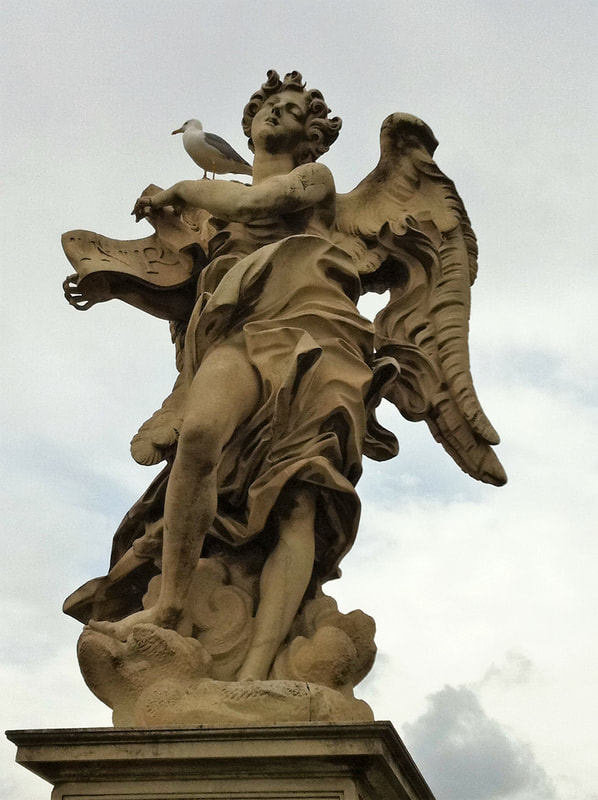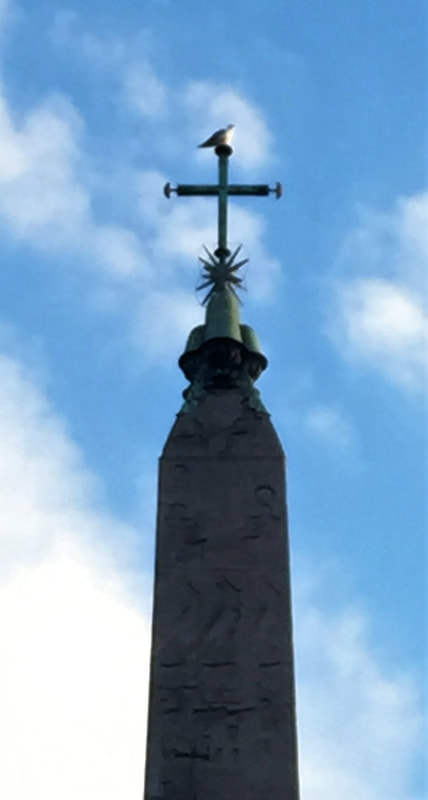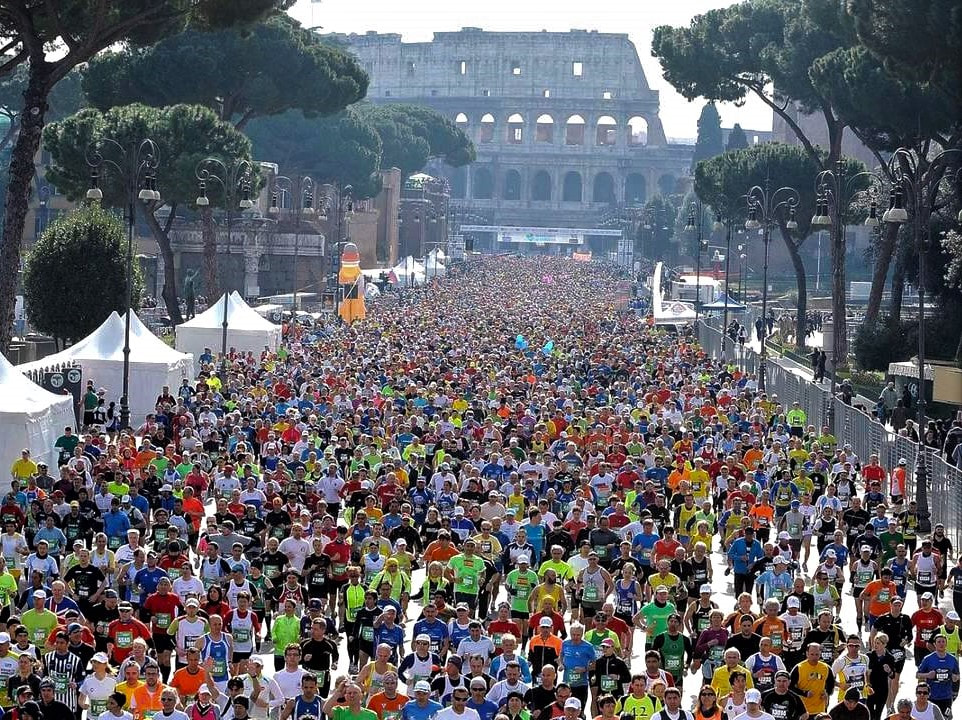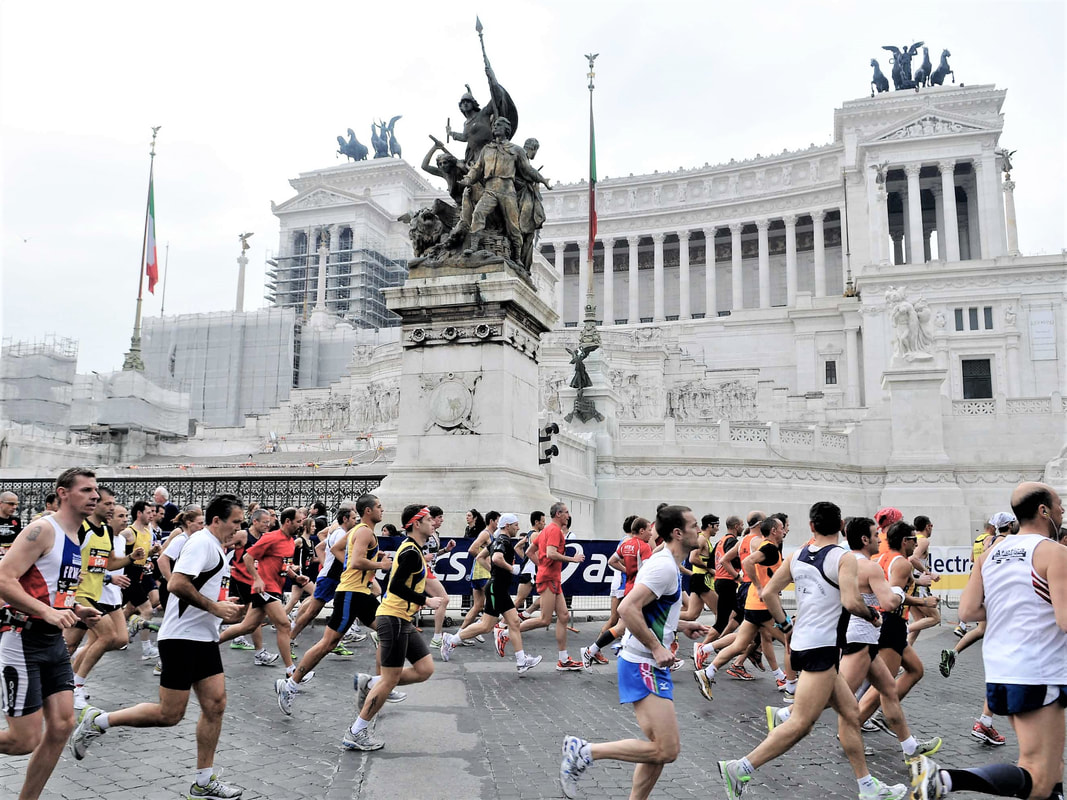| | Strolling in town we are in constant contact with animals, mainly birds. They are all over the places, in the historical center and among the ruins... birds are always resting atop of statues, bathing in fountains, dominating the city from the highs of the columns or obelisks. This is a tribute to our feathered companions. |
One of the most beautiful and important world’s marathon is held in Rome every year in March or April. It takes place on Sunday. This year, 2018 it will be April 8th.
The race gives the participants the chance to run 42 kilometers surrounded by art, history, archeology and architecture from the past 2000 years. The beginning and the marathon’s end is by the roman forum and coliseum! It’s considered one of the most impressive and fascinating marathon of the world attended by professional athletes and passionate alike. The participants came from Italy and all over the world.  The Sanctuary of Our Lady of the Divine Love is our beloved and venerated place of worship since 1740. In the middle of the countryside, there was a much-venerated image of Virgin Mary painted on a medieval tower. A wayfarer on his way to Rome was attacked by a pack of rabid dogs. He saw the Votive image, prayed Virgin Mary and cried for help. Immediately the dogs calmed down and fled into the countryside. The news of the miracle soon spread out and faithful to the sanctuary constantly increased. The Pope Bendict XIV built a sanctuary by the tower where the holy image is preserved. Folk pilgrimages continue today. The word originate from the Roman times, first century before christ, the time of the reform that followed the right of citizenship granted by Rome to the allied in Italy.
Instead of small villages ( in Latin ‘pagi ‘ the state privileged the creation of larger settlements: the ‘municipium’ In Latin ‘municipium’ derives from ‘munia capere’, that means to assume the burden of the citizen. Therefore commitment and responsibility on behalf of the citizens. 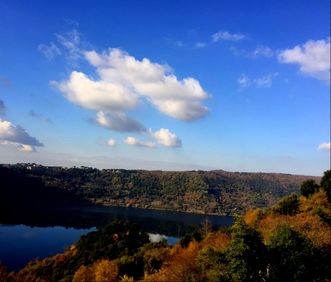 Easter Monday is a public holiday known as ‘Pasquetta’ Little Easter We say ‘Pasqua di rinascita, Pasquetta di Festa’: Easter is for ribirth, Ester Monday for partying ! In Pasquetta we traditionally relax with friends having a picnic outdoor. In the morning, the Italians pack a grill, simple food or leftover and head out on a trip to the lakes, beach, forest or to one of Rome’s parks.  On Easter Sunday the resurrection is celebrated with a Holy Mass and the Benediction ‘Urbi et Orbi’ held by the Pope in Saint Peter square. At home Easter involve a breakfast with boiled eggs, salami and hot chocolate. The Easter lunch includes lamb and fried artichokes, and of course chocolate eggs and the dove-shaped ‘Colomba’ cake. In Italy we say: ‘Natale con I tuoi e Pasqua con chi vuoi’: Christmas with your family, Easter with who you want. Easter day is when we have our amazing and never-ending traditional meals with friends and family alike.
 Holy Friday is dedicated to the recollection of Jesus Christ’s death on the cross. The solemn commemoration of the Lord Passion occur at 3.00pm all over the world while in Rome the ceremony takes place at 5.00pm. The Pope held the Mass in St. Peter Basilica at 5.00pm.. Later on Good Friday, at 9.00pm, the Pope goes to the Coliseum where he presides at the Stations of the Cross, a popular Catholic devotion which entails the recollection and re-enactment of Jesus bearing the cross to Calvary  This is the day when Christians commemorate the institution of priesthood and of the Eucharist. On Holy Thursday morning the pope together with a thousand of priests celebrates Mass in Saint Peter Basilica. This celebration is known as the ‘Chrism Mass’, since, during it, the oil of chrism used for baptisms and ordinations is blessed. Throughout the world the clergy gather with their bishops and renew the promises they made at their ordination. Traditionally on Holy Thursday evening, the Pope crosses the city to his cathedral, St John in Lateran, for the evening celebration of the Lord’s Supper. The Mass commemorates Christ’s institution of the Eucharist on the night before he died.  The holy week is one of the busiest week of the year in Rome. Of course it starts with Palm Sunday and end with Ester Monday known in Italy as ‘Pasquetta’. There is a wonderful range of ceremonies and customs all over the city to prepare for the Christian celebration of Christ rising from the dead at the first Easter. Easter Sunday Mass in St Peter Square, presided by the Pope, is one of the biggest event in the city’s religious calendar. The flower characterizing Easter week is the ‘Violacciocca’ or ‘Viola di Pasqua’ honestly I couldn’t find the English translation but here are the pictures. This flower has an extraordinary and intense smell. You can easily find it in our homes in Easter time.  It marks the very beginning of Ester celebrations: everyone attend the morning masses and receive the olive branches that we give everyone we meet during the day. The use of bringing the olive or the blessed palm into our homes has a devotional origin and represent a wish for peace. The great event is the Palm Sunday and Passion of the Lord Papal mass in Saint Peter's Square, at 9:30: At 12:00 the Pope held the Angelus and the blessing ‘Urbi et Orbi ‘from the benediction loggia in Saint Peter façade. 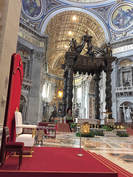 Easter week in Rome is very busy. There are many Papal celebrations in the Vatican. Travelers that wish to visit Rome has to remember that the visit of Saint Peter Basilica can be difficult, while the Vatican museums are closed on April 2nd. The liturgical calendar and activities of the Pope in 2018 Easter week :  Great activities this morning in Saint Peter square. Gardeners all over, little trucks going in and out the passagway guarded by the swiss Guards. Tomorrow there will be Palm Sunday mass held by Pope Francis in Saint Peter square and therefore the square will be embellished by palms and Olive trees. Getting ready! This is a very popular race as it takes the runners to the beach! In 2018 it will be in his 44th edition and it's earning increasing popularity and international awards too.
It is the most participated half marathon in Italy. It starts around 9.00am, the patecipants run along the Cristoforo Colombo road toward the sea passing through part of the EUR district, along the park of Pineta di Ostia, and ending on Lungomare Lutazio Catulo. http://www.romaostia.it/ Suddenly the daisies appeared today. It is something anticipating spring time. They are very welcome!
 It is a major international holiday around the world, in Italy it's not a bank holiday, but is quite felt. I do not love this feast because I think we should be celebrated every day…in any case I really like the tradition to offer mimosa flowers to the women in your life. The mimosa trees start blossoming in the mid of February. (It is the first nature’s sign that winter is turning to his end), therefore there are still many blossoming at the beginning of March. It’s amazing: how on March 8th mimosa’s sellers appear all over the city, at every traffic light. Many people just wander with mimosas offering it to the ladies they met. On March 8 state museums and archaeological sites are free for women (only), in honor of International Women's Day.  This wonderful ebony piece of furniture can be seen in the ‘Museo di Roma’ located just at one end of the splendid piazza Navona. I love this piece because it’s ornate by 18 views of Rome. The main places of pilgrimage are depicted in many cases when the crowd attends religious celebrations. Therefore it is particularly interesting for Rome history lovers.  The 40 days period of penance preceding Easter in the past was announced by great religious functions, bells ringing and missionary preachers reminding the romans about the need of repentance. Everyone was expected to attend mass at 6.00am on Wednesday ashes and many were still wearing the carnival masks. The 40 days of Lent was a period of severe food restrictions, no meat was allowed and only sick persons with special permissions were allowed not to respect the prescribed diet. Theatrical performances and paries were forbitten. Romans love the pleasures of life, therefore during lent they started treating themselves with the ‘Maritozzi’: a particular kind of pastry. You can still find maritozzi all year around in coffee shops and pastry shop. The maritozzi are usually cut in the middle and stuffed with whipped Cream. Absolutely delicious  I’ve been to a Masks atelier in Venice where all phases of masks making were explained. I’ll try to make a mask in the future, in the meantime I’ll share info with you. You’ve to be an artist since the first step is making a clay sculpture of the mask. When its dry and its surface is smoothed you have to pour a mixture of liquid plaster gypsum on the model to create the cast you’ll use to produce the masks. 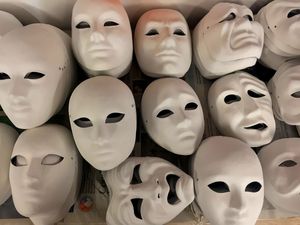 Carnival time was a period of excesses. The protagonist was the people: ‘king for a day’, who had permission to party and subvert the rules they were always submitted to. The Carnival event ended on Tuesday night with the ‘Corsa dei Moccoletti’: everyone was in the street running while holding a candle, and trying at the same time to blow out the candles of the others keeping alive theirs. A cruel popular entertainment occurred on monte testaccio, the bloody ‘ Ruzzica de li Porci’ –run with the pigs. Pigs with carts rolled down the hill and at the bottom of the slope the spectators competed to get what was left of the animals. This tradition was abolished by Pope Clement IX in 1667.  Since medieval times the Popes organized parties and events providing leisure time before the restrictions of the Lent. The venue was on the potsherds hill of Monte Testaccio. The most popular era of roman carnival started with the venetian pope Paul II (1464-1471 ) who introduced major celebrations held along the Corso road and piazza Venezia. He transferred his residence in piazza Venezia and ordered the festival to be moved there. There were various bizarre and cruel competitions and races taking place along the one mile long Corso avenue that involved people and animals. The end was in Venetia square and the prize was a Palio: a precious banner or a cloth given to the winner |
My BlogThis blog is aimed to share with you my Roman experiences, reflections and researches. Categories
All
Archives
November 2019
|
